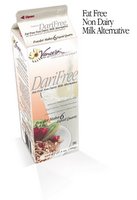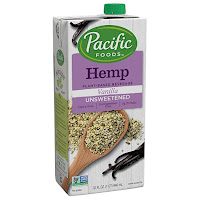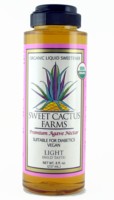I'm sure you've heard talk about the evils of high fructose corn syrup. But do you understand the problem? I didn't. If you don't, this article is worth reading. It explains the issue well.
washingtonpost.com
Sweet but Not So Innocent?High-Fructose Corn Syrup May Act More Like Fat Than Sugar in the Body
By Sally Squires
Washington Post Staff Writer
Tuesday, March 11, 2003; Page HE01
From fruit-flavored drinks to energy bars, a huge array of sweetened foods and beverages crowds grocery shelves, vending machines, restaurant menus, school lunches and kitchens. According to the latest figures from the U.S. Department of Agriculture (USDA), consumption of various sweeteners, often in calorie-dense foods and drinks, has risen in the United States from an estimated 113 pounds per person in 1966 to 147 pounds in 2001.
Last week, the World Health Organization (WHO) recommended limiting intake of added sugars found in food and drink to no more than 10 percent of daily calories, a step the WHO said could help stop the worldwide rise in obesity that is fueling the growth of such chronic diseases as type 2 diabetes. The WHO recommendation is far stricter than any that U.S. groups have produced.
But increasingly, it's not just the growing consumption of foods with added sugars that concerns some nutrition experts. What has also changed during the past four decades, the USDA figures show, is the type of sweeteners consumed -- a trend that some studies suggest may help to undermine appetite control and possibly play a role in weight gain.
In 1966, refined sugar, also known as sucrose, held the No. 1 slot, accounting for 86 percent of sweeteners used, according to the USDA. Today, sweeteners made from corn are the leader, racking up $4.5 billion in annual sales and accounting for 55 percent of the sweetener market. That switch largely reflects the steady growth of high-fructose corn syrup, which climbed from zero consumption in 1966 to 62.6 pounds per person in 2001.
While soft drinks and fruit beverages such as lemonade are the leading products containing high-fructose corn syrup, plenty of other items -- including cookies, gum, jams, jellies and baked goods -- also contain this syrup. [For more information about which foods contain these and other added sweeteners, see the Lean Plate Club column on Page F2.]
Made from corn starch, high-fructose corn syrup is a thick liquid that contains two basic sugar building blocks, fructose and glucose, in roughly equal amounts. Sucrose, most familiar to consumers as table sugar, is a larger sugar molecule that breaks down into glucose and fructose in the intestine during metabolism.
An advantage of high-fructose corn syrup is that it "tastes sweeter than refined sugar," making it a popular ingredient for food manufacturers because it enables them to use less, says George A. Bray, former director of Louisiana State University's Pennington Biomedical Research Center in Baton Rouge. As a liquid, the syrup is easier to blend into beverages than refined sugar, according to the National Soft Drink Association (NSDA). Industry taste tests suggested that consumers liked food and drink with high-fructose corn syrup as much as refined beet or cane sugar.
In the 1980s, manufacturing methods improved, prompting a boost in production of high-fructose corn syrup and a drop in price to just pennies below that of refined sugar. "While that may not sound like much to the average consumer, when you consider how many pounds [the soft drink industry buys], it was millions of dollars if not hundreds of millions of dollars in savings," says Drew Davis, NSDA's vice president for federal affairs.
The switch made economic sense and, as Davis notes, "back then, there was no suggestion that high-fructose corn syrup was metabolized differently" than other sugars. More recent research suggests, however, that there may be some unexpected nutritional consequences of using the syrup. "Fructose is absorbed differently" than other sugars, says Bray. "It doesn't register in the body metabolically the same way that glucose does."
For example, consumption of glucose kicks off a cascade of biochemical reactions. It increases production of insulin by the pancreas, which enables sugar in the blood to be transported into cells, where it can be used for energy. It increases production of leptin, a hormone that helps regulate appetite and fat storage, and it suppresses production of another hormone made by the stomach, ghrelin, that helps regulate food intake. It has been theorized that when ghrelin levels drop, as they do after eating carbohydrates composed of glucose, hunger declines.
Fructose is a different story. It "appears to behave more like fat with respect to the hormones involved in body weight regulation," explains Peter Havel, associate professor of nutrition at the University of California, Davis. "Fructose doesn't stimulate insulin secretion. It doesn't increase leptin production or suppress production of ghrelin. That suggests that consuming a lot of fructose, like consuming too much fat, could contribute to weight gain." Whether it actually does do this is not known "because the studies have not been conducted," said Havel.
Another concern is the action of fructose in the liver, where it is converted into the chemical backbone of trigylcerides more efficiently than glucose. Like low-density lipoprotein -- the most damaging form of cholesterol -- elevated levels of trigylcerides are linked to an increased risk of heart disease. A University of Minnesota study published in the American Journal of Clinical Nutrition in 2000 found that in men, but not in women, fructose "produced significantly higher [blood] levels" than did glucose. The researchers, led by J.P Bantle, concluded that "diets high in added fructose may be undesirable, particularly for men."
Other recent research suggests that fructose may alter the magnesium balance in the body. That could, in turn, accelerate bone loss, according to a USDA study published in 2000 in the Journal of the American College of Nutrition.
In November, however, Havel and his colleagues published a review in the American Journal of Clinical Nutrition that examined evidence from multiple studies. They concluded that large quantities of fructose from a variety of sources, including table sugar and high-fructose corn syrup, induce insulin resistance, impair glucose tolerance, produce high levels of insulin, boost a dangerous type of fat in the blood and cause high blood pressure in animals. "The data in humans are less clear," the team noted.
Others are skeptical that high-fructose corn syrup acts differently in the body than table sugar. "I don't see it as a particular evil," says Michael Jacobson, director of the Center for Science in the Public Interest and a vocal critic of soft drinks, which he dubs "liquid candy." "It wouldn't make much difference if soft drinks were sweetened with sucrose [table sugar] or high-fructose corn syrup."
Until scientists sort out the details, many nutrition experts say it makes sense to not surpass the 10 percent recommendation of the WHO. On a 2,000-calorie intake, that works out to about 200 calories -- roughly the amount found in a 16.9-ounce bottle of soda or about eight Chunky Chips Ahoy cookies or about an three ounces of plain M&M's. (Last year, the National Academy of Sciences suggested that added sugars should not exceed 25 percent of daily calories -- about 500 calories on a 2,000-calorie intake.)
"Reducing consumption of added sugars seems reasonable to me," Havel says, "just as you should not consume too many calories from fat and you should exercise regularly."
But industry groups urged consumers not to respond by avoiding any one food ingredient. Audrae Erickson, president of the Corn Refiners Association, notes that many of the studies used pure fructose rather than the combination of fructose and glucose found in corn syrup.
"There are many sources for the obesity epidemic," Erickson says. "There's no one single source of the obesity epidemic or the onslaught of diabetes in America. But there are many contributing factors and no scientific link to suggest that high-fructose corn syrup is a contributing factor."
Erickson says that research published in a 1993 supplement to the American Journal of Clinical Nutrition suggests that there is no evidence linking the syrup to the obesity epidemic.
What does play a role, she noted, "is the lack of physical exercise. You can not discontinue the use of any one food or beverage and expect tomorrow -- or even in 10 years from now -- to be thin without increased physical activity."
That's a message being delivered not just by the food and beverage industries, but also by the U.S. Surgeon General, the National Academy of Sciences and the WHO, which also urged more physical activity -- an hour a day of moderate-intensity activity, such as walking -- in its report last week.•
© 2003 The Washington Post Company
 that exposes it to gluten. Some people do not react to this, while others say they do.
that exposes it to gluten. Some people do not react to this, while others say they do.








